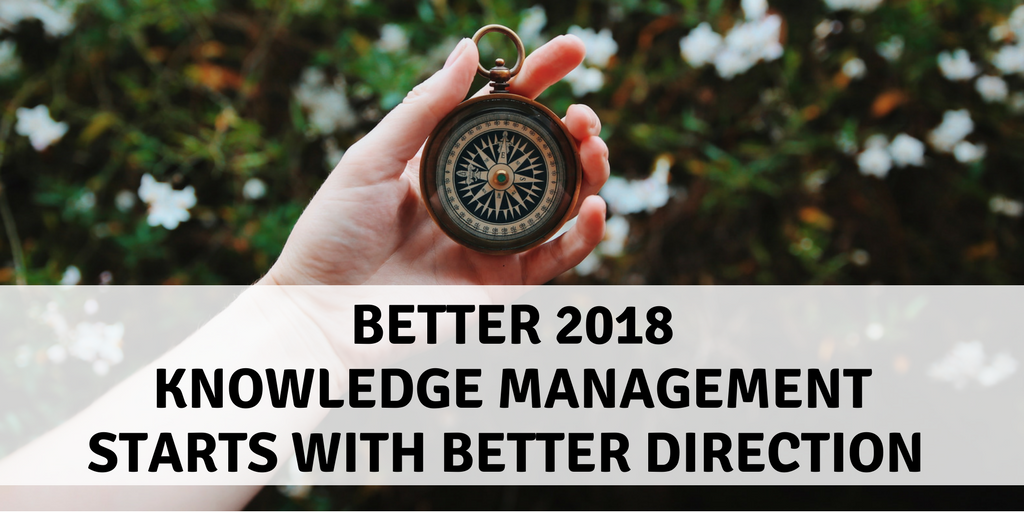Early January is always full of hope and promise, both in our personal lives and at work. But as we all know from past failures, resolutions don’t get very far without a solid plan. Now is the perfect time to set a New Year’s resolution to make your KM program the best it can be—and then identify practical steps to make it happen. Here are five ways that successful KM programs design and implement a winning strategy.
1. Start with a small, targeted initiative focused on a specific business need or problem.
 Starting small, with clearly defined and narrowly aimed initiatives, lets you achieve quick wins and demonstrate the value of KM before energy lags or gets redirected. Tackle a time-sensitive, tangible problem or opportunity that business leaders care about and then grow the KM effort from there.
Starting small, with clearly defined and narrowly aimed initiatives, lets you achieve quick wins and demonstrate the value of KM before energy lags or gets redirected. Tackle a time-sensitive, tangible problem or opportunity that business leaders care about and then grow the KM effort from there.
At Abbott Pharmaceuticals, for example, the spark came from the need to minimize knowledge loss when a division broke away from the company. All KM activities were aimed at two goals: capture product knowledge and support knowledge sharing before knowledge could get lost in the big change.
Aligning knowledge capture and sharing with this kind of urgent need helps you justify the time, energy, and money involved in creating innovative KM approaches. Once developed, these approaches can be adapted to new situations or expanded to other parts of the organization.
2. Align the KM vision to the overall business strategy.
Linking KM to a strategic business need is another key to long-term success. When you align your KM program’s vision with the goals of the business, it helps create a vision that ties it all together and resonates with employees. It also makes it easier to formulate a compelling business case that justifies ongoing KM investment.
At Rockwell Collins, an aerospace and defense organization, the KM program is branded as “Knowledge Management and Training”—terminology that resonates within the company’s learning-focused culture. KM activities are tied to the strategic financial plan, which anticipates and sets direction five years out. KM serves a varying role based on the overarching focus each year and how much KM activities can support the current strategic goals.
3. Benchmark to identify critical needs and accelerate progress against goals.
A KM program left to its own devices is sure to stagnate. Successful programs are constantly changing and adapting as technology, employee expectations, and organizational needs evolve. It’s smart to benchmark your KM program regularly against others to measure progress, identify emerging needs, and ensure your program is not falling behind.
One way to benchmark involves using our KM Capability Assessment Tool to measure your program against APQC’s Levels of KM MaturitySM. Identifying gaps can help you align your KM strategy to business needs and expand KM into more areas where it’s needed.
When Shell performed such a self-assessment in 2012, the results were one of several factors that led to a “reset” of the organization’s KM approach, with a new strategy and operational model as well as enterprise-level KM solutions. This helped the organization standardize KM across the enterprise, creating a stronger overall program instead of relying on isolated “islands of excellence” in specific teams or departments.
4. Build toward a consistent enterprise KM program.
What’s the best way for a KM program to grow? By building on early successes and reacting to new business needs. Most mature KM programs aim to be consistent across the enterprise, promote standardization, and take advantage of scale.
For many companies, KM starts in one division or function (usually the one with the most immediate need) and then grows outward from there. After NextEra Energy created communities of practice for its power generation division, it leveraged that win to launch a comprehensive, enterprise-wide program. In addition to supporting communities, that larger program has improved content management and the speed and accuracy of information transfer, sped up employee onboarding, and broken down communication silos across teams and functions.
5. Flex and evolve the KM strategy in line with the business.
Another way to avoid stagnation is to reevaluate and refresh KM strategic priorities so that your KM effort changes on pace with your organization.
The U.S. Army Corps of Engineers integrates business needs into KM strategy in a unique way: using a “KM Battle Rhythm”—a defined method for processing inputs for better decision making. This approach uses input from meetings, internal feedback, subordinate organizations, higher headquarters, ongoing missions and operations, and commander’s intent to ensure that current and future KM activities are on the mark.
When you deepen your KM program’s connection to your organization, you can grow it in a way that ensures its ongoing relevance and value. So take a hard look at your KM capabilities this New Year and make changes that will position your program to have a greater impact on organizational success.
For a deeper dive into the recommendations and examples mentioned in this post, check out APQC’s white paper, Setting a Strategic Direction for KM. APQC members can access the full case studies and the rest of the research in our Achieving KM Maturity and Business Impact collection.